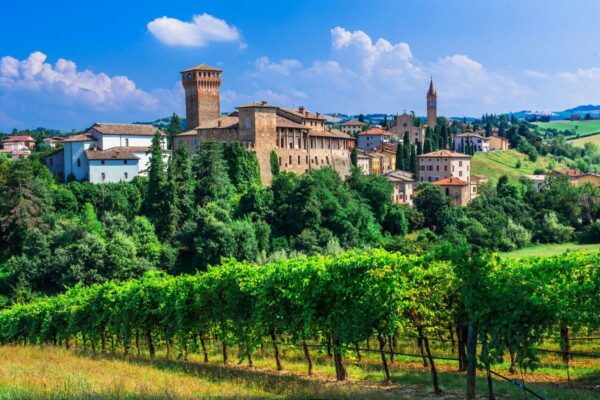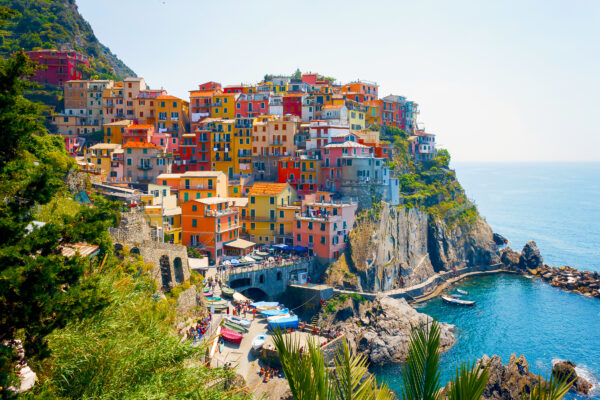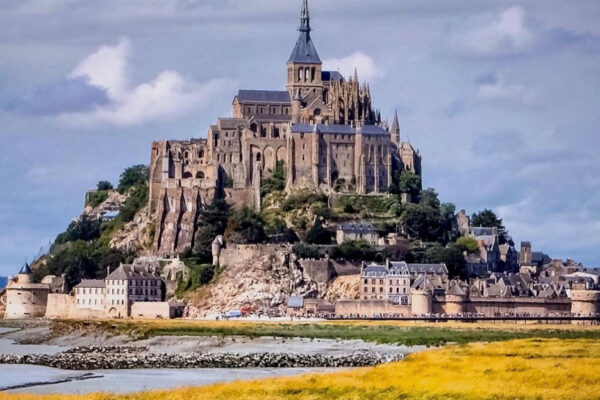Torino: Italy’s Best Kept Secret
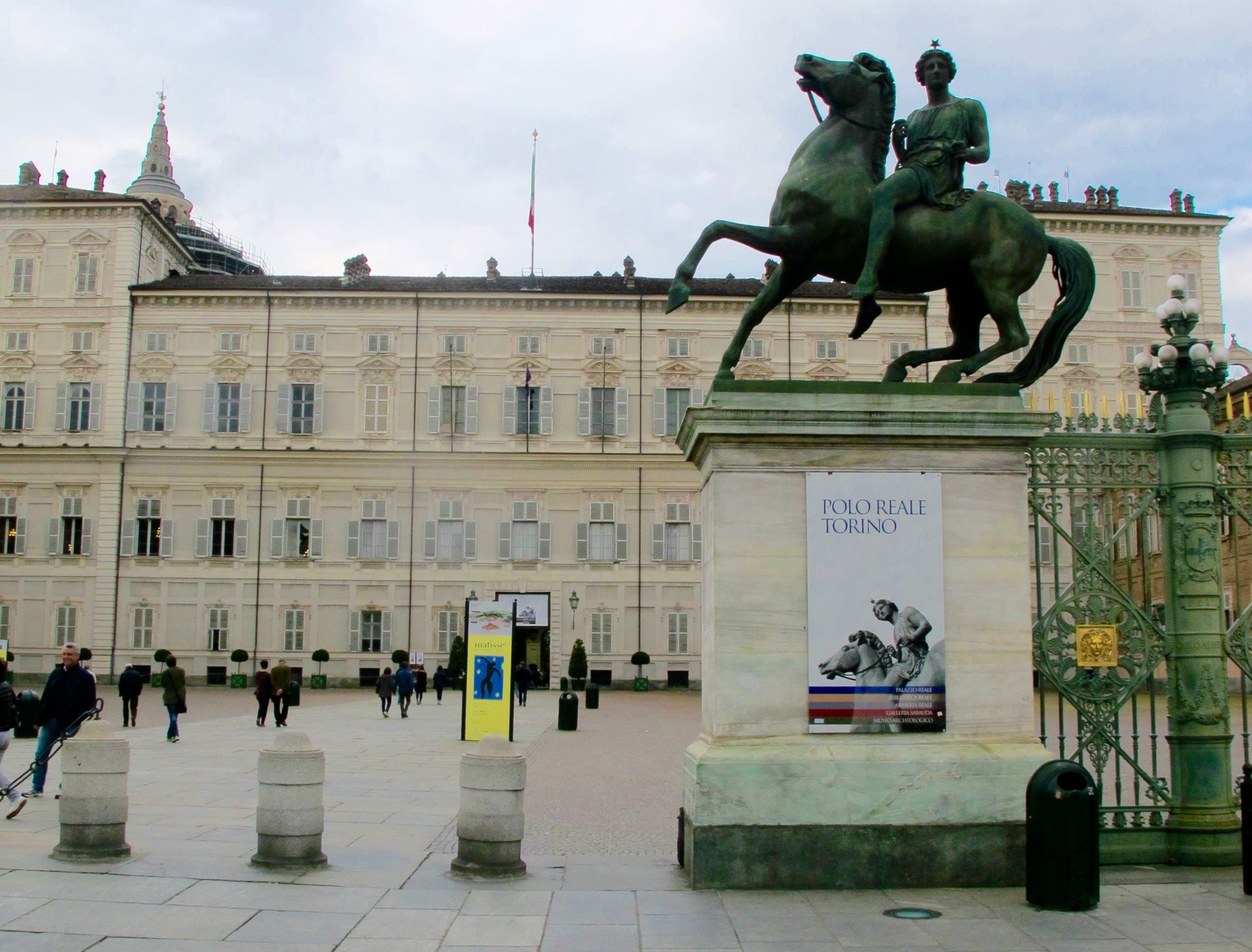
Palazzo Reale di Torino (Royal Palace of Turin).
Text & photos by Marla Norman
Exploring Torino’s wide, tree-lined boulevards, beautiful lush parks, refined boutiques and world-class museums…I wonder…why I haven’t heard more about this lovely city? Torino (or Turin) was actually Italy’s first capital in 1861, when the country was finally united as the Kingdom of Italy. Later the capital was moved to Florence and ultimately Rome.
Still, Torino is considered a financial and industrial center, particularly since Fiat maintains a large plant there. The city was also briefly in the spotlight when it hosted the 2006 Winter Olympics. But, in general Torino seems to receive little attention. Like much of Piedmont, the city is well under the world’s radar. Surprising – but all the better for travelers lucky enough to experience the region!
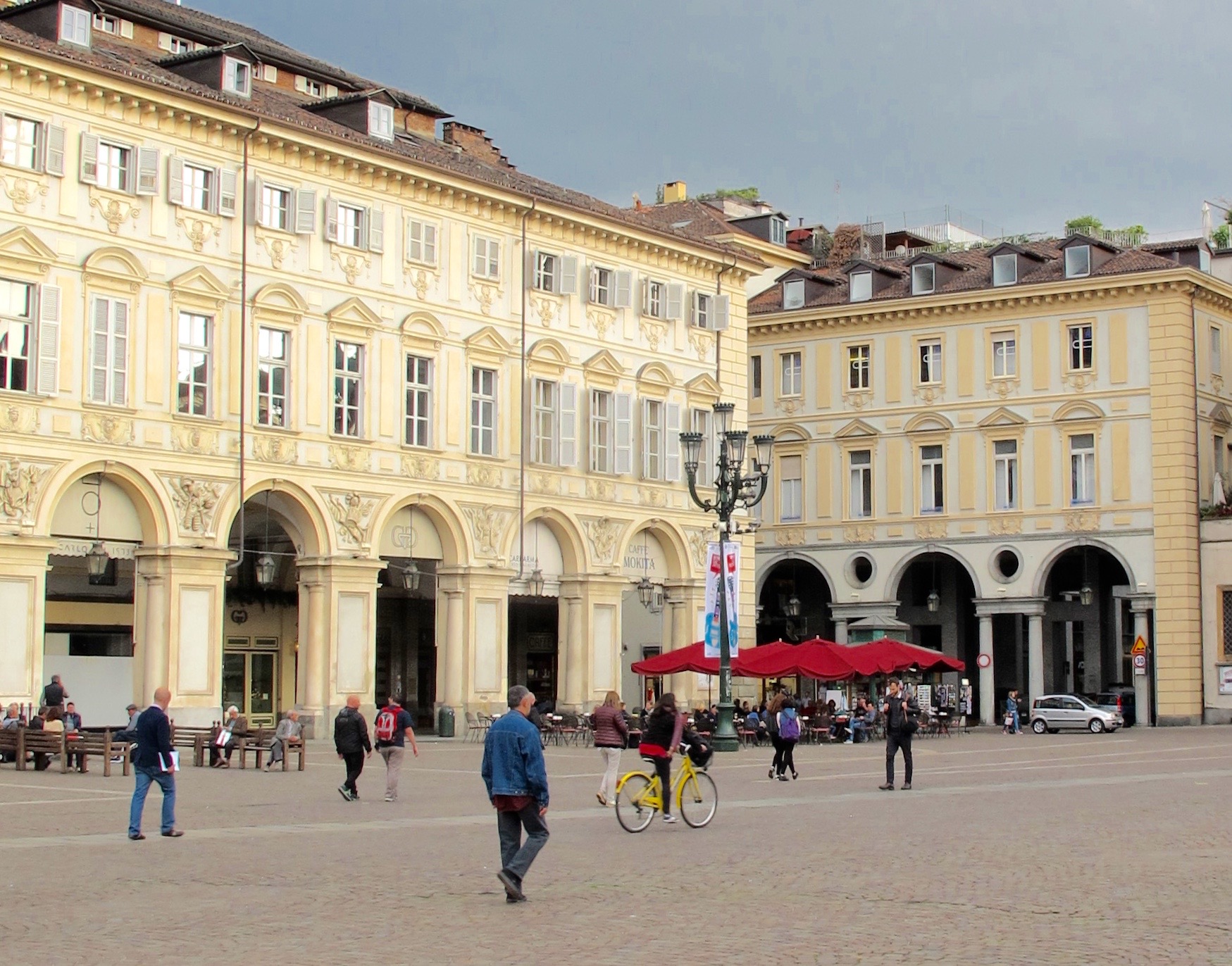
Pretty piazzas, lively cafes and Baroque buildings are typical of Torino.
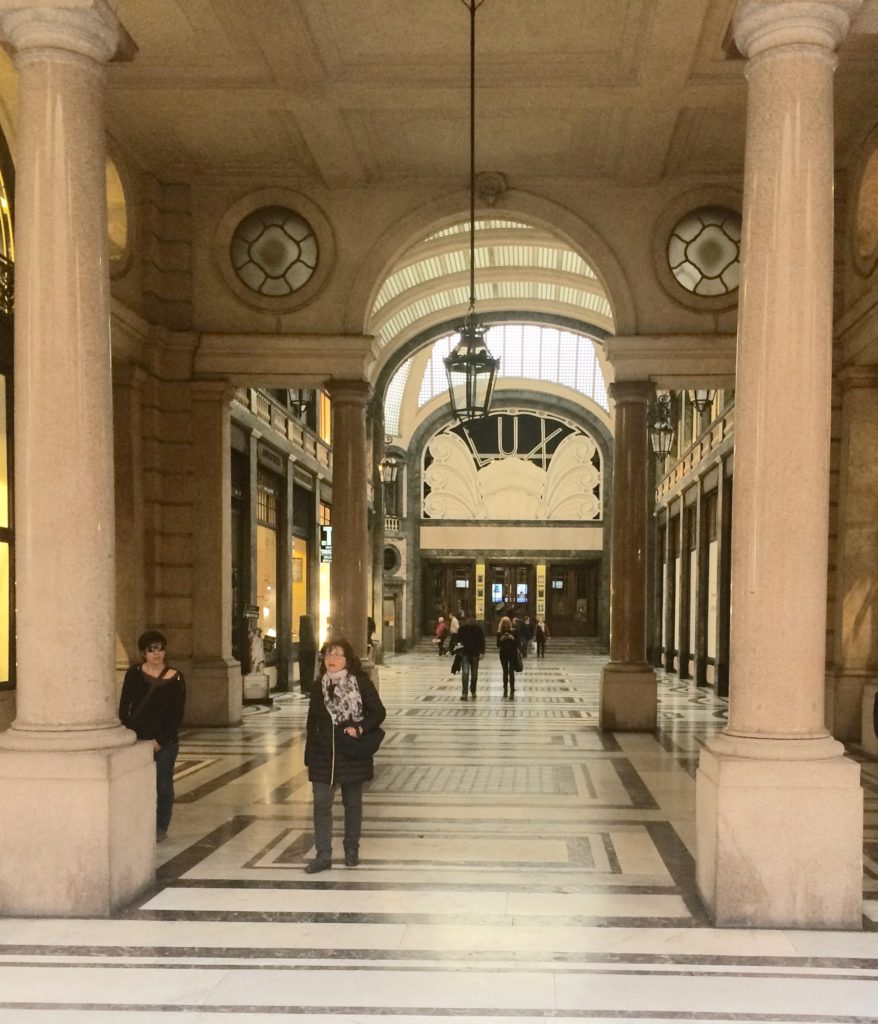
Elegant porticos and marble walkways add to the stylish shopping along Torino’s posh boutiques.
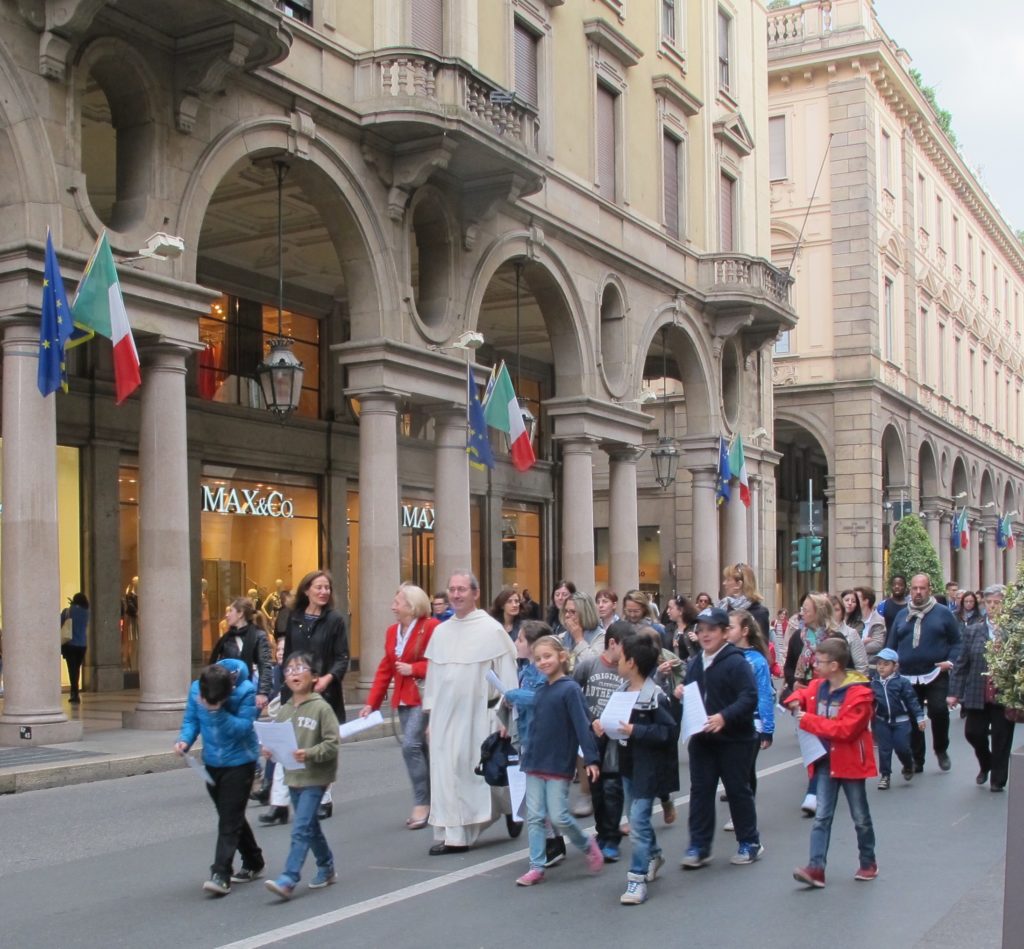
An old fashioned parade marches happily through the main shoppping area of Torino.
ROYAL HOUSE OF SAVOY
We began our tour at the Palazzo Reale di Torino (Royal Palace of Turin) – an imposing set of buildings constructed under the House of Savoy – a feudal French family that is one of the oldest aristocratic families in the world. The Savoy controlled the region for over 500 years and left a distinctly French influence behind.
As we tour the grounds, a Matisse exhibit is running at the Palazzo Reale’s Galleria Sabauda. The permanent collection, which contains original works amassed by the Savoy, include works by Jan van Eyck, Rembrandt, Sandro Botticelli, Fra Angelico and Filippino Lippi.
In addition to the art museum, two main floors of the palace interior are also open to the public. Here you can see how the Savoy royalty lived. Tapestries, gilt ceilings and 17th-19th century furniture are on display. The Armeria Reale (Royal Armory) contains one of Europe’s most extensive collections of arms and armor.
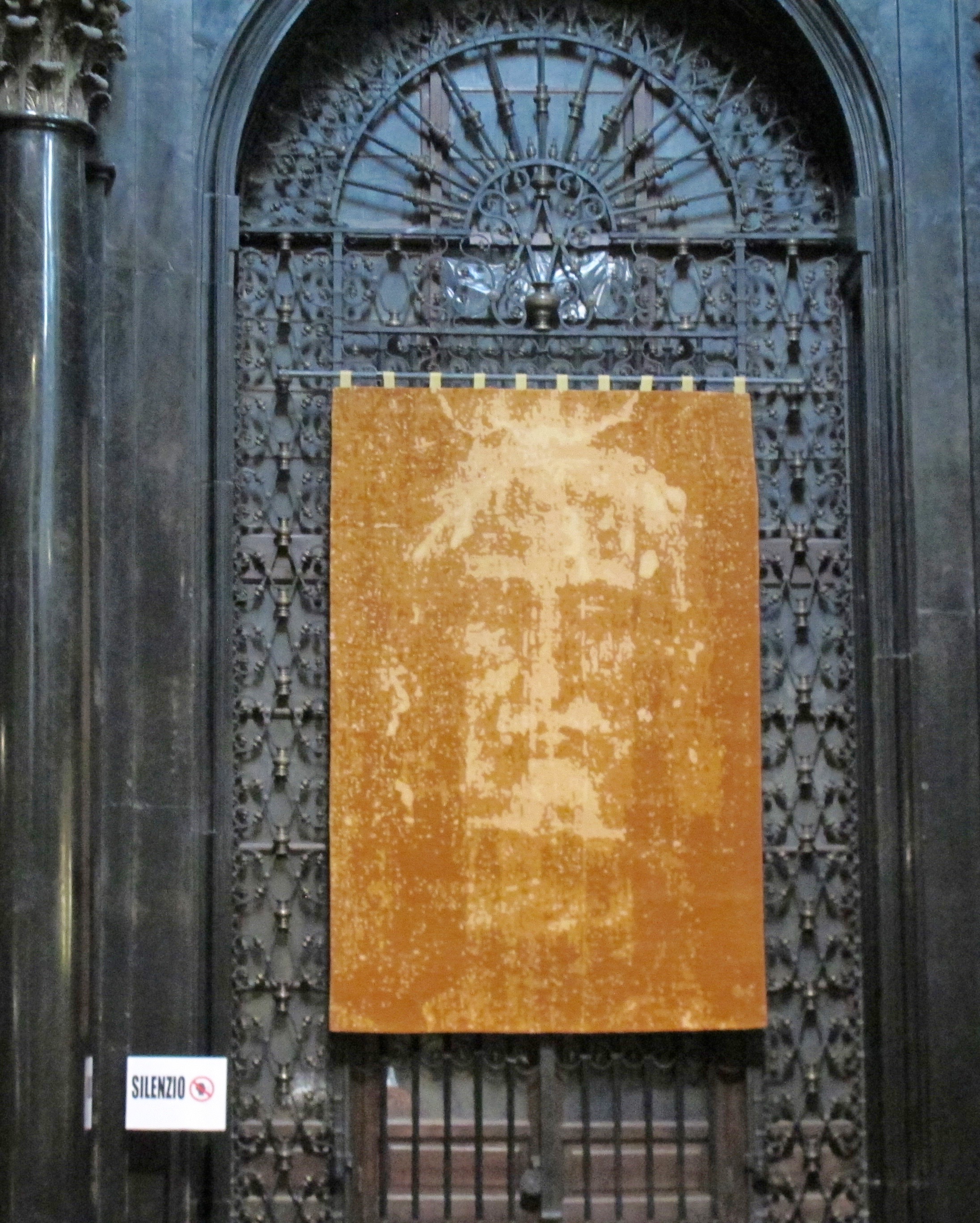
The Shroud of Turin is maintained in the Duomo di San Giovanni.
THE SHROUD OF TURIN
Near the Palazzo Reale, is the Duomo di San Giovanni (Cathedral of St. John the Baptist), where the famous Shroud of Turin is housed – a four-yard-long sheet of cloth, thought to be the burial shroud of Christ, and an imprint of his crucified body. Much speculation and controversy surrounds the cloth; however, the more recent chronology of the Turin Shroud has been well-documented. The cloth came into the possession of Ludovico of Savoy and in 1578, the shroud was brought to Turin by Duke Emanuele Filiberto of Savoy.
The cathedral itself is situated over the remains of an ancient Roman theater. At one time three churches existed on the site. All were demolished to build a new cathedral dedicated to St. John the Baptist. Duke Charles Emmanuel II of Savoy launched a project to enlarge the cathedral to house the shroud in 1649 and completed construction in 1694.
The Holy Shroud is rarely shown in public, but replicas are on display at the cathedral as well as films narrating the history and scientific testing completed to establish the legitimacy of the cloth. The cathedral is open daily, but be sure to check the website to verify hours.

Duomo di San Giovanni (Cathedral of St. John the Baptist) is situated over the remains of an ancient Roman theater.
CAFFE TORINO
Take a break at one of Torino’s oldest restaurants, Caffè Torino. For over one-hundred years, the eatery has provided an elegant dining room to compliment its finely crafted drinks, sandwiches, pastry and renown chocolates. Ornate, wrought-iron staircases, chandeliers, gilded mirrors and marble adorn the place. Smartly dressed staff live up to their tailored uniforms with efficient and timely service.
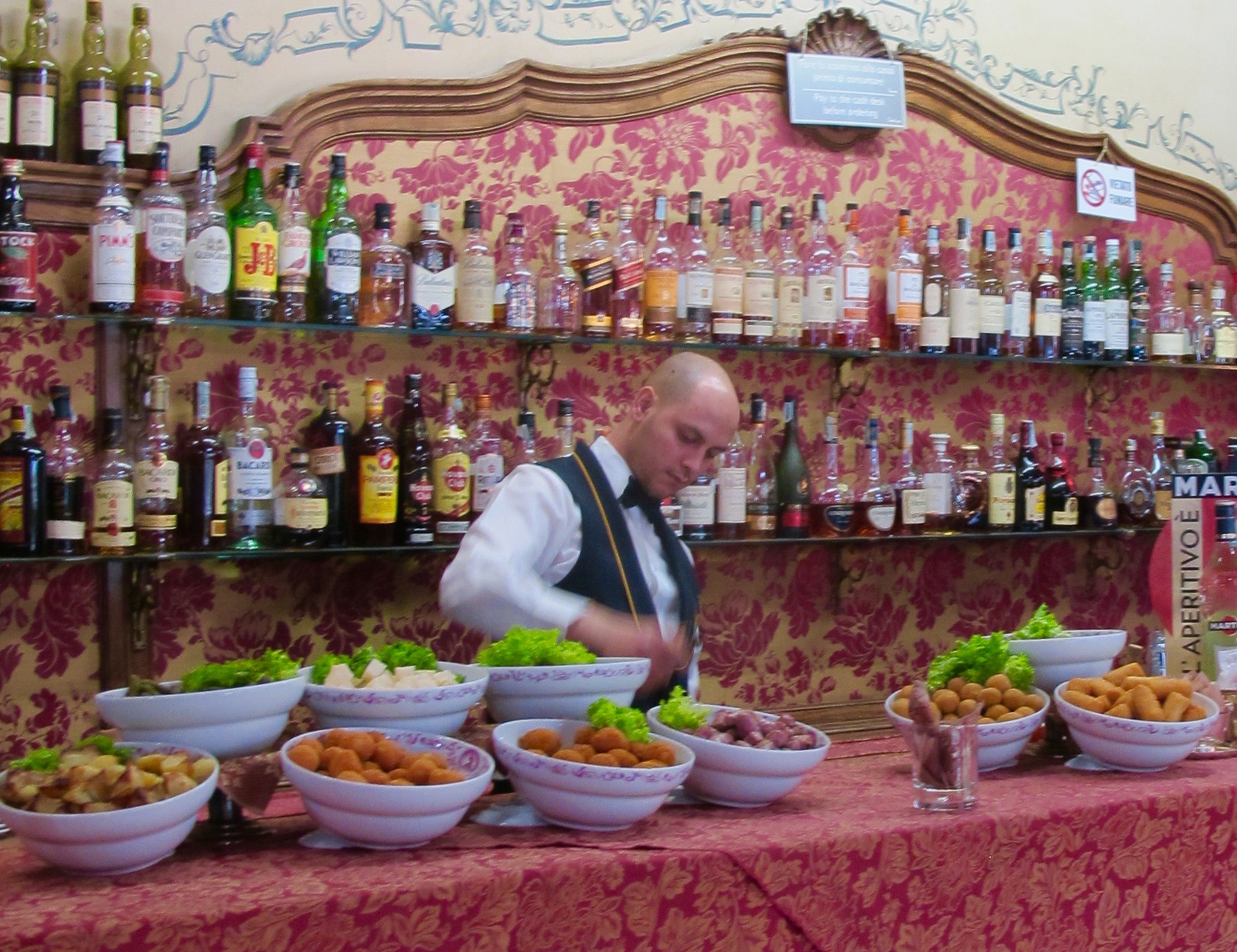
For over one-hundred years Caffè Torino has provided an elegant dining room to compliment its finely crafted drinks. Photo by Marla Norman
If you come for aperitifs, you’ll be impressed with the array of goodies that accompany your drinks: olives, cornichons, sausages, cheeses, tiny sandwiches – of every shape, size & filling imaginable. If you’re looking for something sweet, the chocolates and confectionary are tempting works of art. Pick up a few boxes to enjoy later or take home as souvenirs. Whatever you do, be sure to rub the bronze bull (the original torino) outside on the pavement to ensure you will return to Turin!
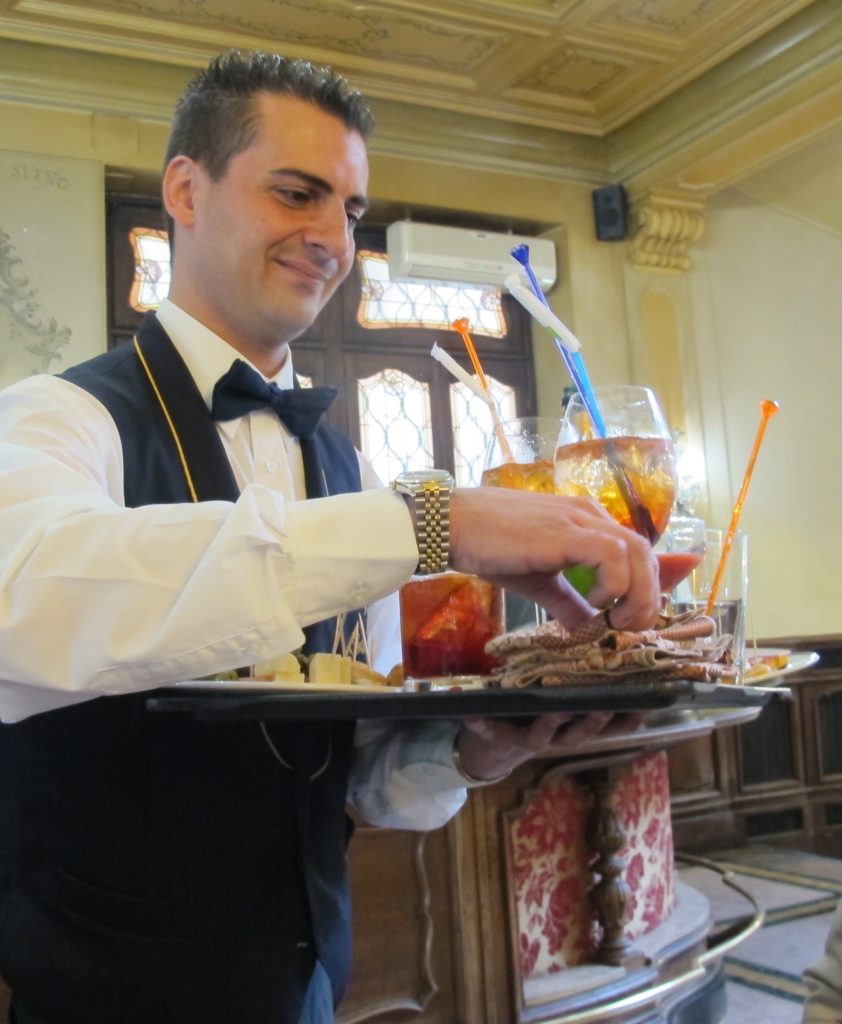
Uniformed staff provide superb service.
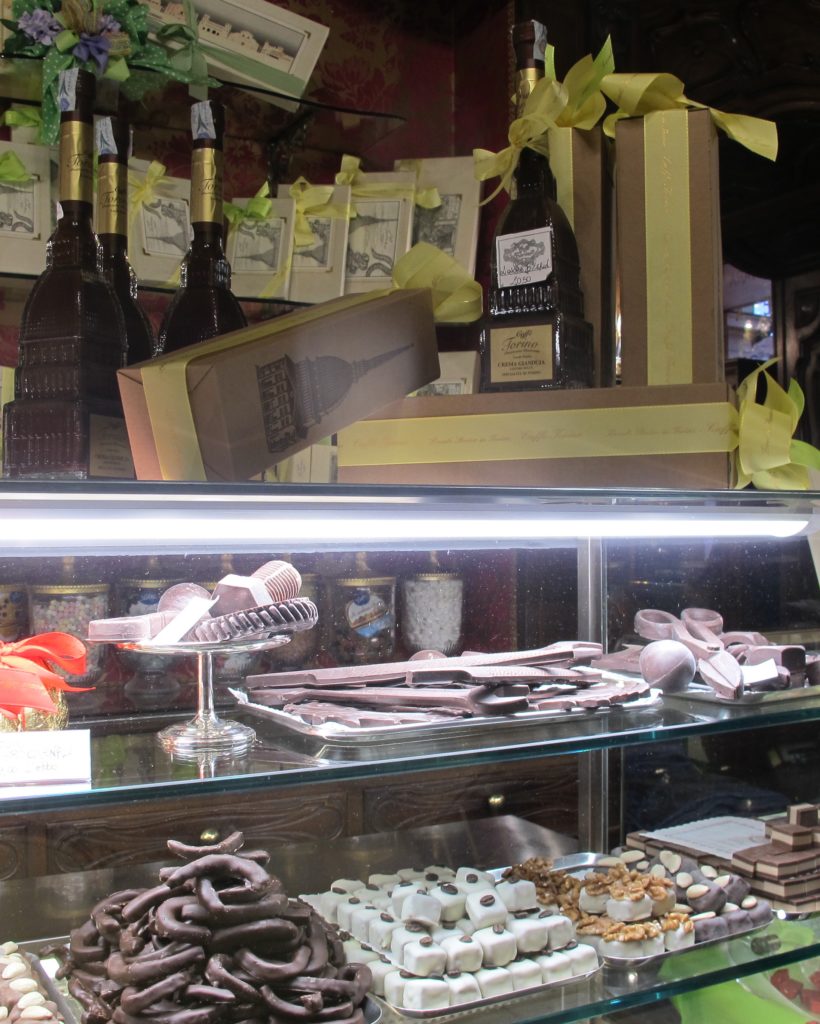
Caffè Torino is also known for its sublime chocolates and confectionary.
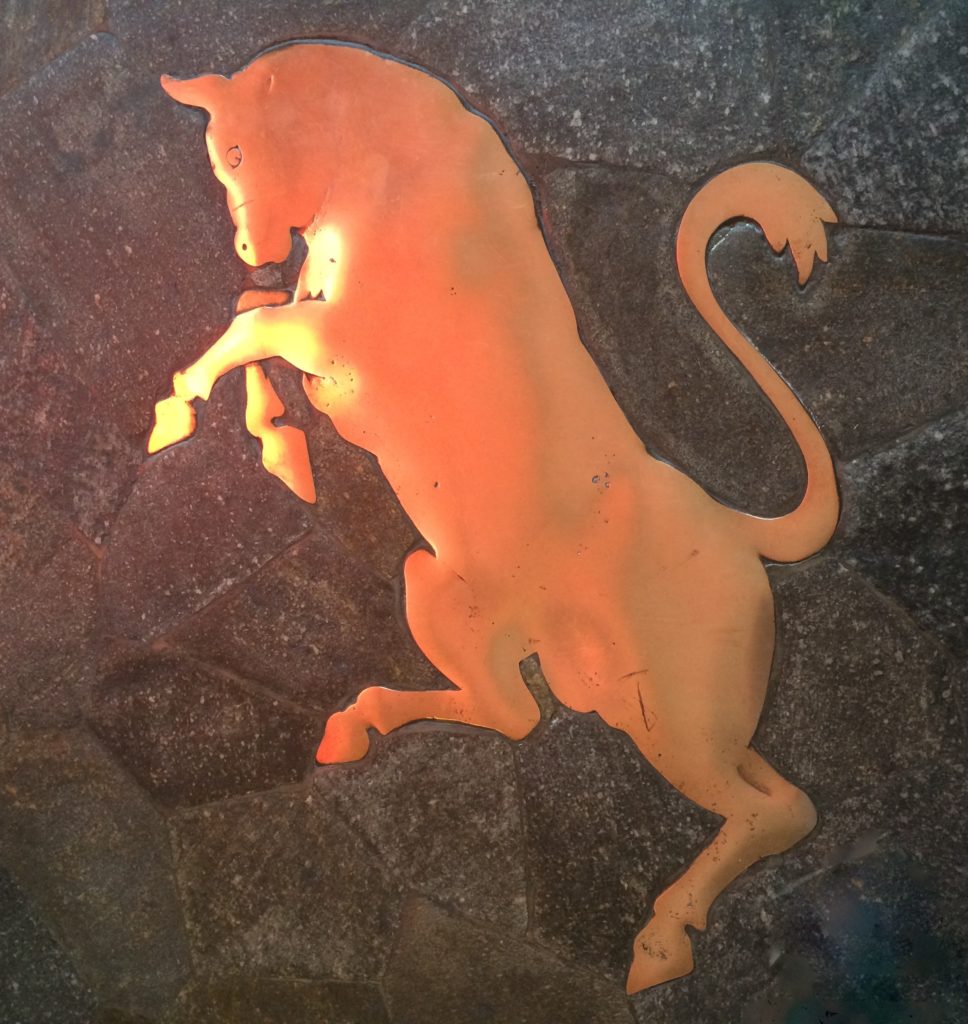
The famous bronze bull and logo for Caffè Torino.
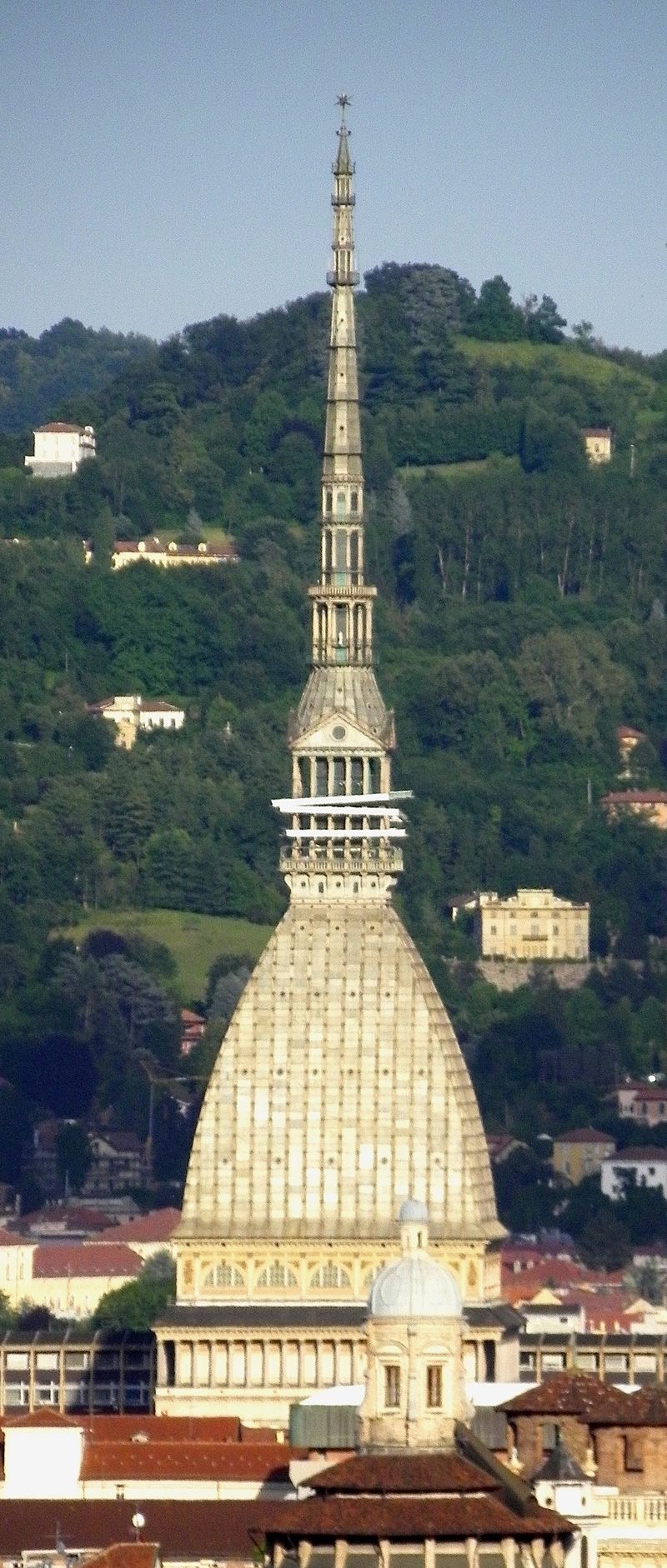
Torino’s most iconic landmark, the Mole Antonelliana.
MOLE ANTONELLIANA & THE NATIONAL FILM LIBRARY
Towering over the city is an elaborate 167-meter-high (550 feet) dome and spire. Torino’s most iconic landmark, the Mole Antonelliana is visible for miles in any direction. The structure was originally intended to be a synagogue, but construction costs drastically exceeded the budget and work was halted in 1869. At this point, the city of Torino stepped in and took over the project, using it as a museum for national archives.
In 2000, the Museo Nazionale del Cinema was established in the building, one of the most extensive collections of its kind in the world. Five stories, consisting of 35,000 feet display over 300,000 movie posters, 12,000 movie reels and hundreds of pieces of scenery, costumes, scripts, production equipment, etc. Notable items include masks from Star Wars, the Godfather screenplay, Marilyn Monroe’s photos, Federico Fellini’s hat and famous red scarf.
Thousands of films are maintained in the archives; many are shown throughout the year at regularly scheduled museum showings. The Museum also sponsors three film festivals, including the Torino Film Festival, which is held annually in November.
After viewing the various memorabilia and displays – or perhaps catching a film – you’ll want to take the crystal elevator to the top of the dome for views of the city extending to the base of the Alps and beyond.
MUMMIES & AUTOMOBILES

Statue of Seti II in the Museo Egizio.
In addition to one of the world’s largest and most significant cinema collections, Torino also boasts one of the finest and largest museums of Egyptian artifacts and history. The Museo Egizio (Egyptian Museum) catalogs over 30,000 artifacts.
Highlights include three different versions of the Egyptian Book of the Dead, including the most ancient copy known. There is a 13th century BC statue of Ramses II as well as the Tomb of Kha – which was found completely intact with furniture, food, clothing, cosmetics and writing tools.
The museum’s last major acquisition was the small Temple of Ellesiya, which the Egyptian government presented to Italy for assistance during the Nubian monument salvage campaign in the 1960s. Be sure to visit the museum site for hours and ticket sales – a bargain at €7.50!
Moving (or racing) ahead a few centuries, another popular museum in Torino is the Museo Nazionale dell’Automobile. The museum has a collection of almost 200 cars including the first Italian cars to be produced: a Bernardi from 1896 and a Fiat from 1899. There are also beautifully preserved Bugattis and Ferraris. The 1907 Itala that raced from Peking to Paris is here, as well as the 1929 Isotta Fraschini Tipo 8A that starred in the film Sunset Boulevard.
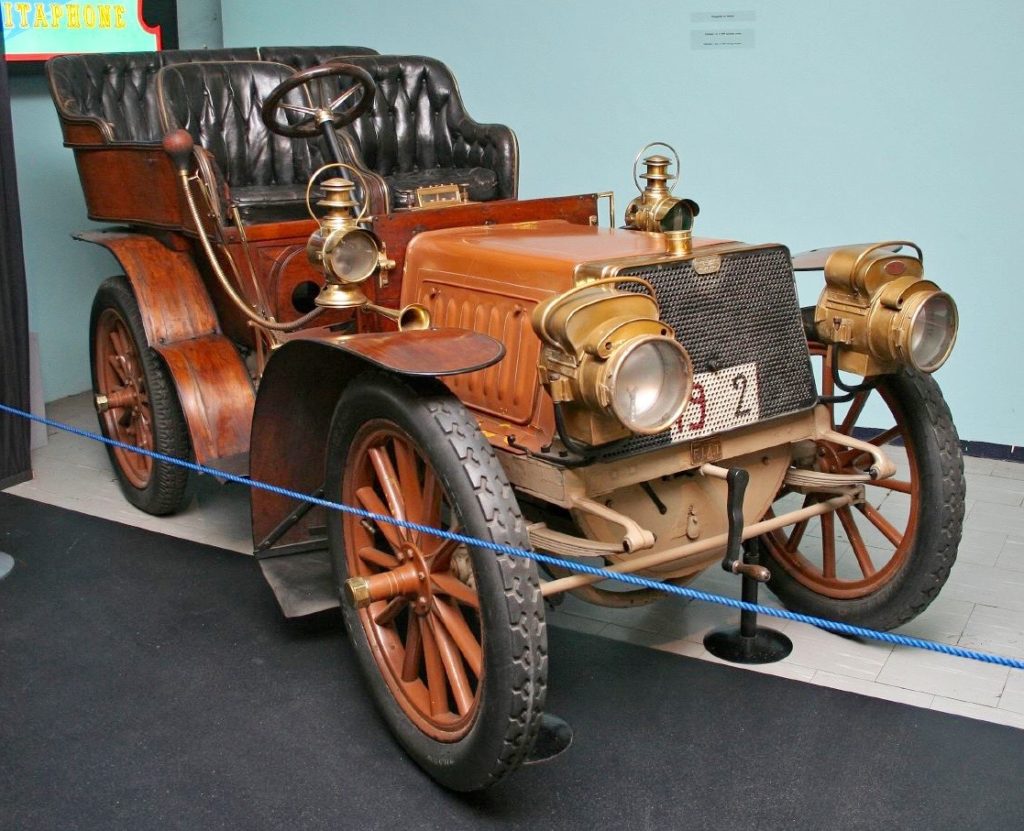
Fiat 12 HP in the Museo Nazionale dell’Automobile.
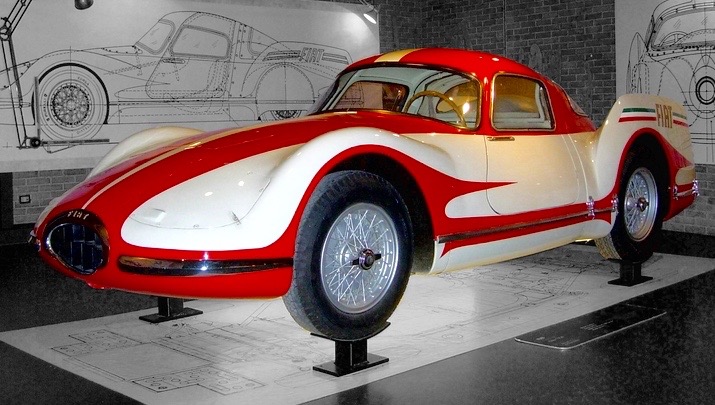
Still red hot Fiat Turbina!
Countries other than Italy are also represented: a 1916 Ford Model T is on display and a spectacular Rolls Royce Silver Ghost from 1914. A Document Center archives tens of thousands of prints, along with 7,000 texts (most now considered rare and out-of-print). The museum is open daily. Anyone with even a passing interest in automobiles will enjoy touring this exceptional collection.

EATLY was founded in Torino by Oscar Farinetti in 2007.
THE WORLD’S FIRST EATLY
Many travelers are familiar with Eatly – particularly since the New York City branch opened with co-owners and celebrity chefs Mario Batali and Lidia and Joe Bastianich. But, the very first Eatly was founded in Torino by Oscar Farinetti, in 2007. The earliest version of this mega market-restaurant extravaganza was built in a closed vermouth factory. Now, there are a grand total of 14 Eatly markets throughout Italy and 7 outside the country: New York, Chicago, Sao Paulo, Dubai, Istanbul, Porta Yokohama and Tokyo.
Like the other Italy-based markets, the Torino Eatly offers the best of the country’s produce, carefully selected cheeses, fish and prime beef cuts. First-rate wines including Piedmont’s world-renowned Barolo and Barbaresco are available as well. Freshly baked breads, handmade pastas, ice creams and pastries are prepared daily.
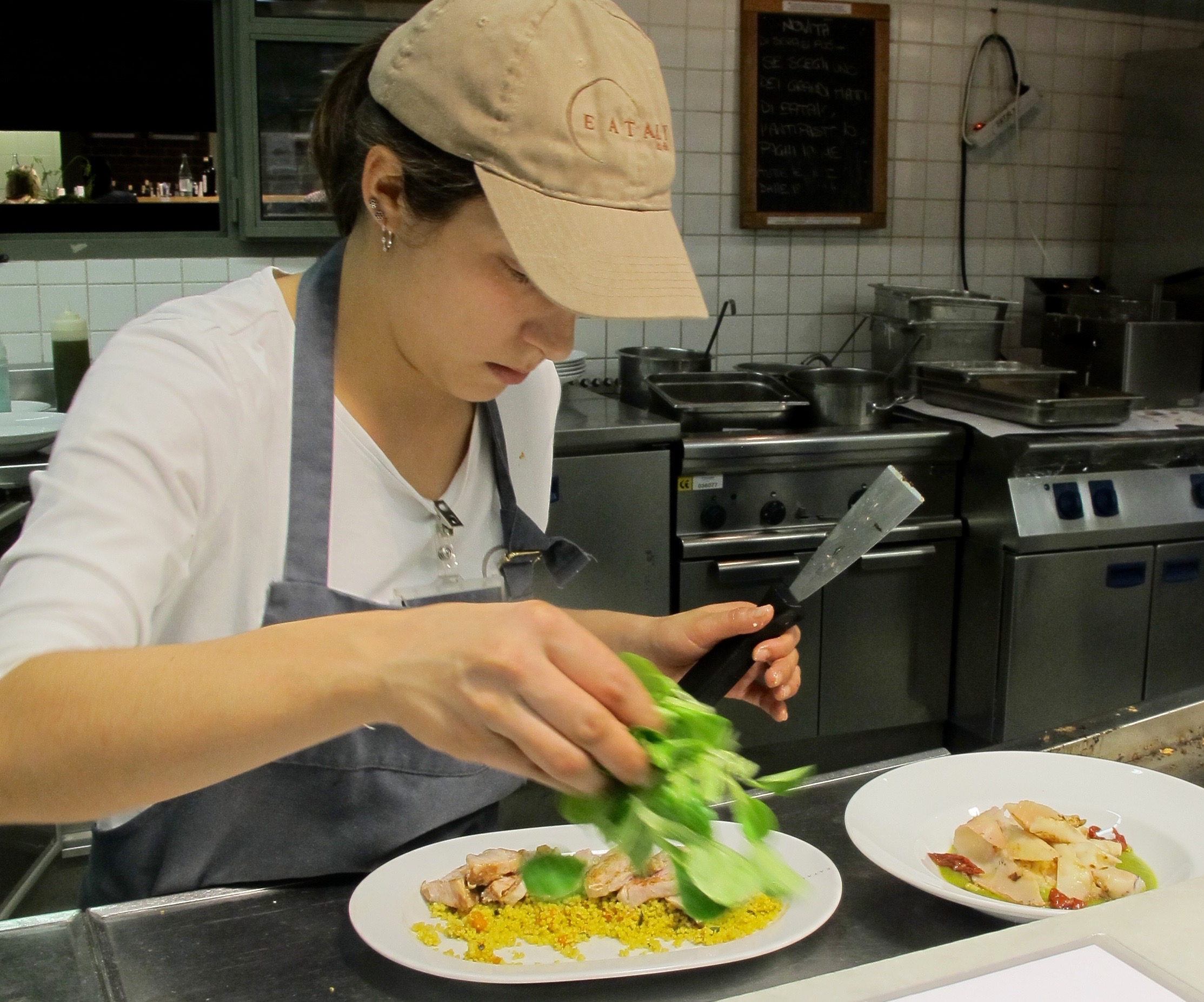
The seafood restaurant is one of many options at EATLY.
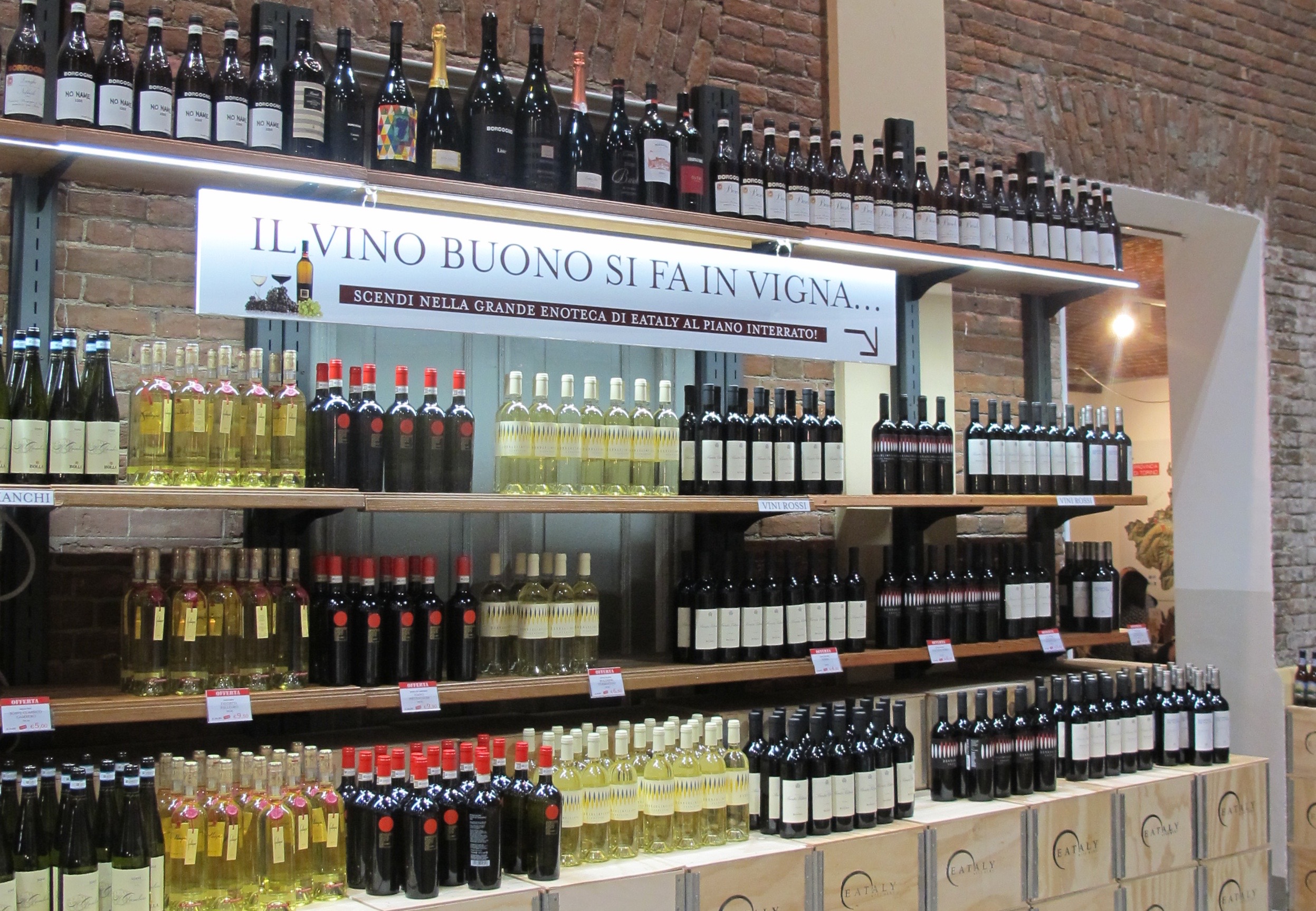
First-rate Italian wines including Piedmont’s world-renowned Barolo and Barbaresco are featured at EATLY.
Especially noteworthy is the Slow Food section of the emporium, which is part of the international Slow Food Movement that was born in Torino. (For more information on this organization and the Terra Madre Salone del Gusto festival visit slowfood.com.)
Shoppers can also indulge at any number of different food counters and restaurants serving everything from hamburgers to haute cuisine. The evening we dined there, we chose the seafood restaurant and enjoyed Tuna with rice and Sea Bass over fresh vegetables. A superb Franciacorta (sparkling wine from Lombardy) was the featured wine of the evening. Needless to say, we toasted the many delights of Torino and hope – quite selfishly – that the city remains under-discovered for just a little while longer.

Toasting Torino! Michel Thibault, Claudio Negrino, Marla Norman, Daniele Bianco (Export Director, Cantina Alice Bel Colle)




